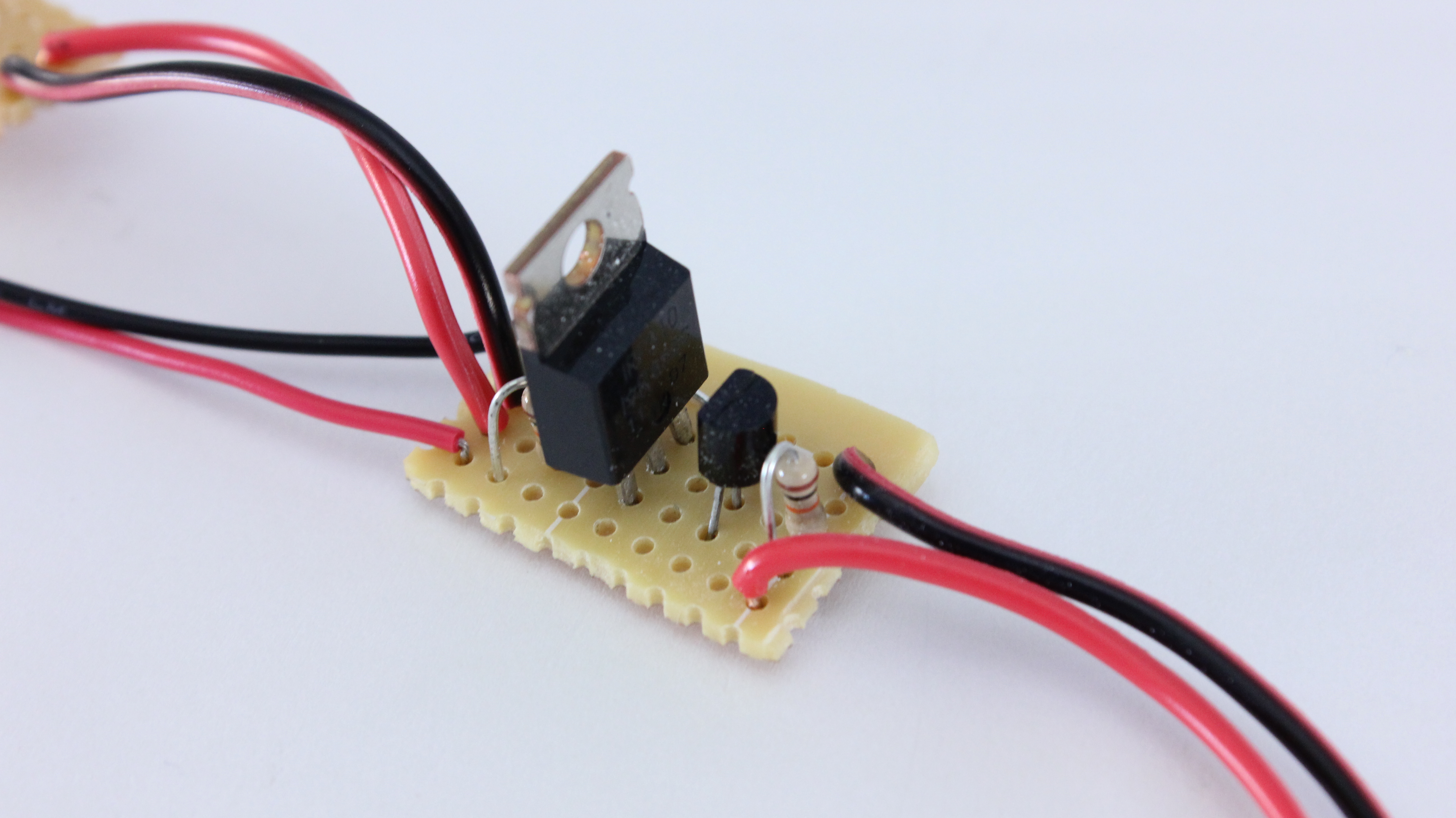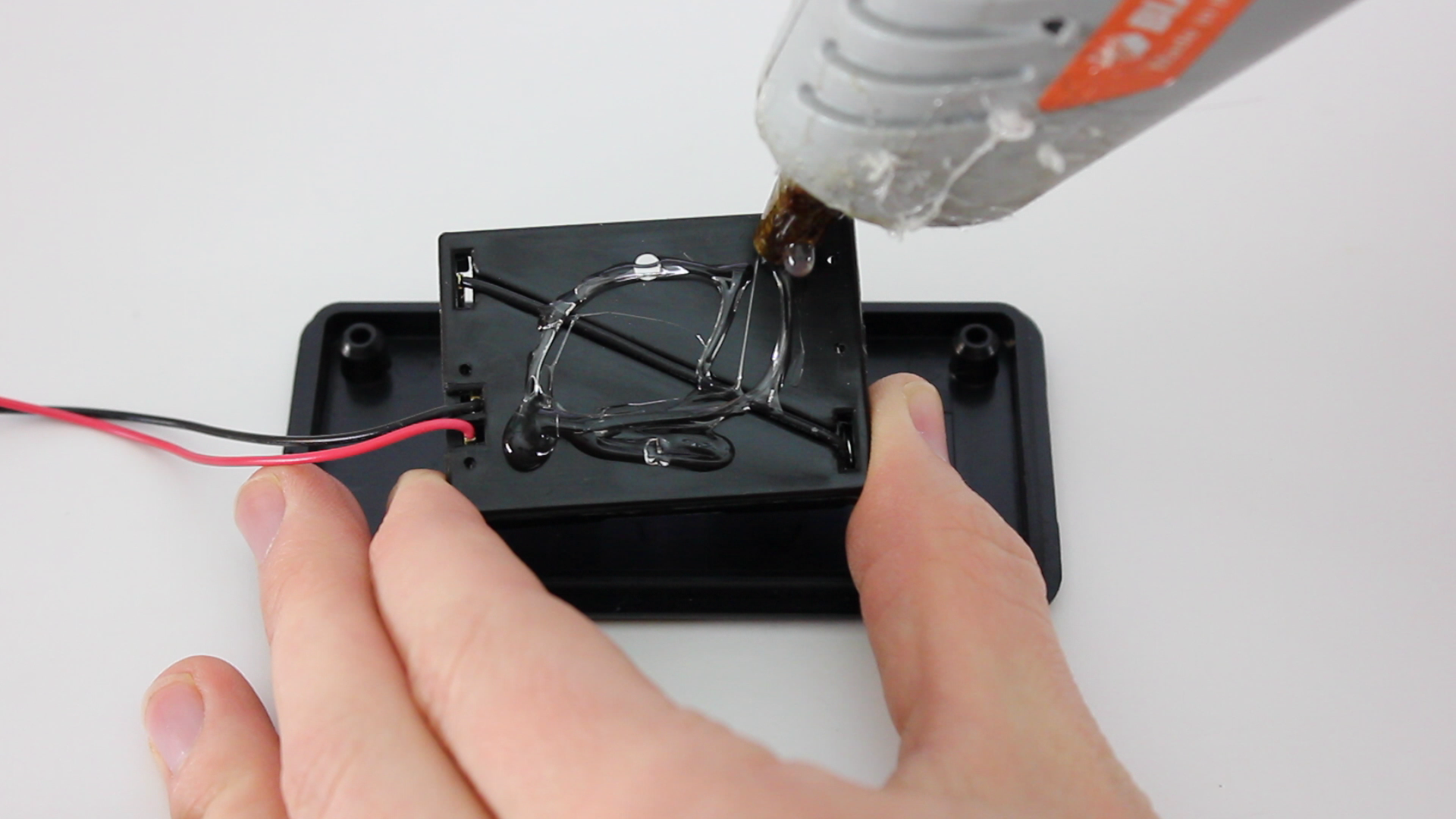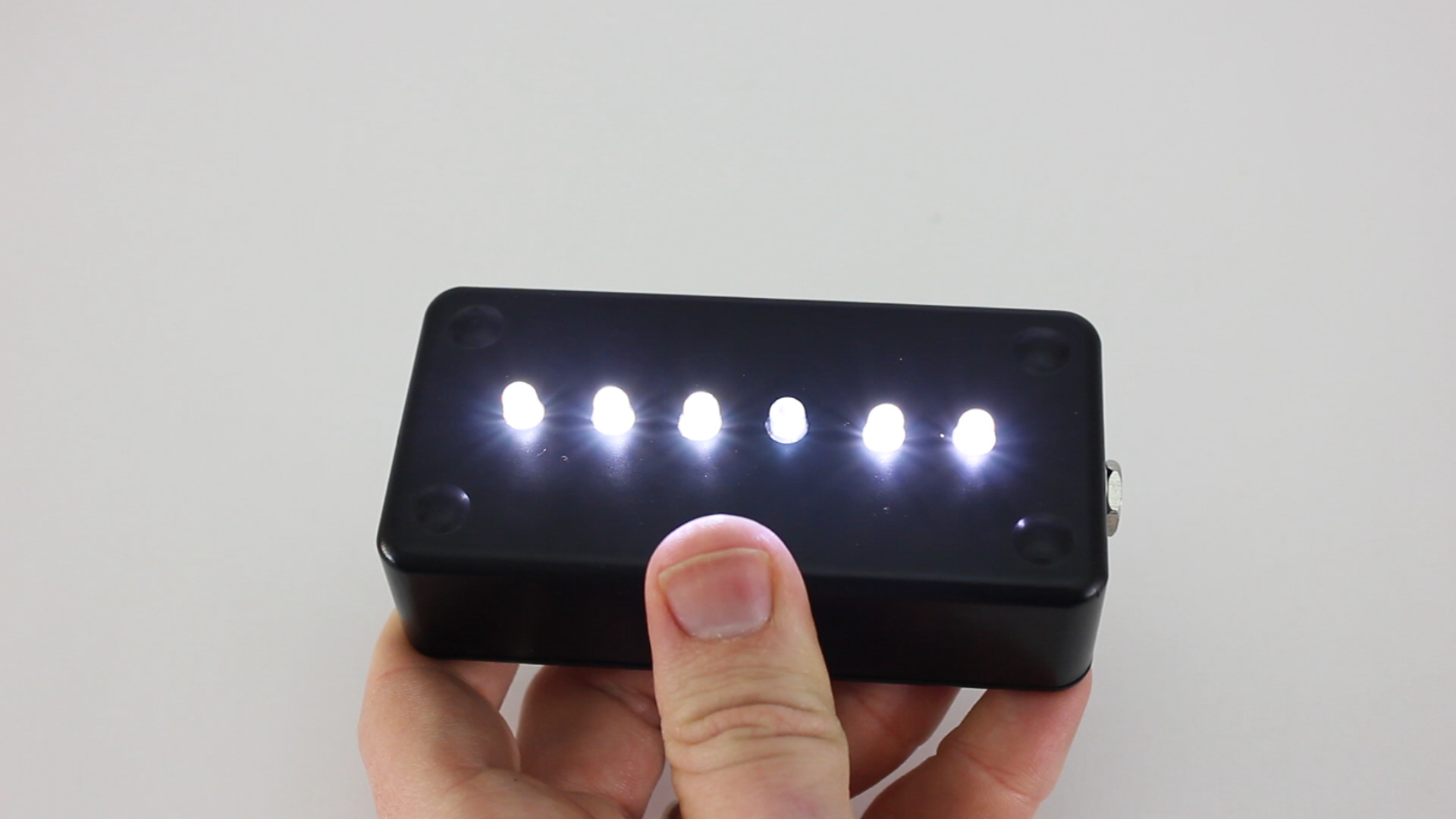Here is a quick overview of the circuit that I designed for this project and how it works.
A DC power supply is hooked up on the left side of the circuit with the positive terminal connected to the resistor and the negative terminal connected to the common ground. The signal from the power supply goes through the resistor to the base of an NPN transistor. This activates the transistor and effectively shorts the gate pin of the MOSFET to ground. This keeps the gate pin in a LOW state and the MOSFET will not conduct electricity, so the LEDs are off.
When the signal from the power supply is turned off (such as in a blackout), the states reverse. With no signal at the base pin, the NPN transistor turns off and is no longer connecting the MOSFET gate pin to ground. The voltage of the gate pin is now pulled HIGH through the 10k resistor. The MOSFET will now conduct electricity and connects the LEDs to ground. The LEDs turn on.
As long as the grid power is connected, the LEDs are off. But as soon as the power goes out, the LEDs automatically turn on. The power for the LEDs is supplied by three AAA batteries. In this configuration, the lights can stay on for up to 10 hours. This will give you plenty of time to make preparations for a long term power outage.























